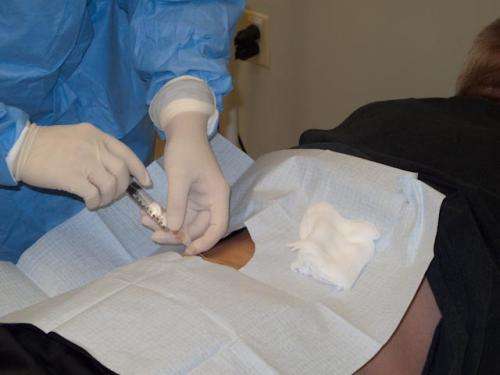Imaging techniques help combat fibromatosis

A study by Royal Perth Hospital (RPH) researchers has highlighted the role of contrast enhanced MRI in managing fibromatosis of the breast, a rare form of breast tumour, and the use of diagnostic open biopsy in its diagnosis.
Fibromatosis usually affects middle-aged women and makes up less than 0.2 per cent of all breast tumours. Although benign, the tumour often mimics malignancy.
To identify the main characteristics and management strategies of this rare condition, the research team searched the RPH Breast Clinic Database for cases of fibromatosis diagnosed between 2002 and 2012.
They found five confirmed cases of fibromatosis and examined their imaging, core biopsy (sampling of tissue from the area of concern) and histopathology (microscopic examination of tissue) findings and clinical symptoms.
Breast imaging results suggested the diseased tissues were between 11 and 35mm in size. All five patients underwent diagnostic open surgery (removal of tissue samples under general anaesthetic).
The researchers say preoperative core biopsy can help with diagnosis, but recommends confirming this using diagnostic open surgery before removing the cancer.
In two of the patients, contrast enhanced MRI was used after excision of the tumour to assess the extent of remaining infected tissue before re-excision.
RPH Clinical Associate Professor Donna Taylor says although contrast enhanced MRI is unlikely to help differentiate fibromatosis from other possible diagnoses (such as cancer) due to their similar appearances, it can help assess the extent of the tumour before surgery, and residual disease after surgery.
Potential monitoring applications
"MRI may also play a role in surveillance of these patients for recurrence, particularly during the first three years post-treatment, when the risk of recurrence is the highest," she says.
"Annual contrast enhanced breast MRI is also recommended during this time, particularly for those women said to have the highest risk for recurrence, such as younger women under 40 years, and where the disease has originated from the pectoralis muscle rather than within the breast tissue."
Dr Taylor says increased awareness of fibromatosis would help medical practitioners in discussions with fibromatosis patients and colleagues to plan appropriate treatment.
"Radiologists and surgeons need to be aware of the important role [that] contrast enhanced MRI can play in planning surgery and in the early follow-up period," she says.
"Because other benign pathologies, such as nodular fasciitis, can mimic fibromatosis but do not require radical excision, diagnostic open biopsy is always advisable to confirm the diagnosis before attempting complete excision.















